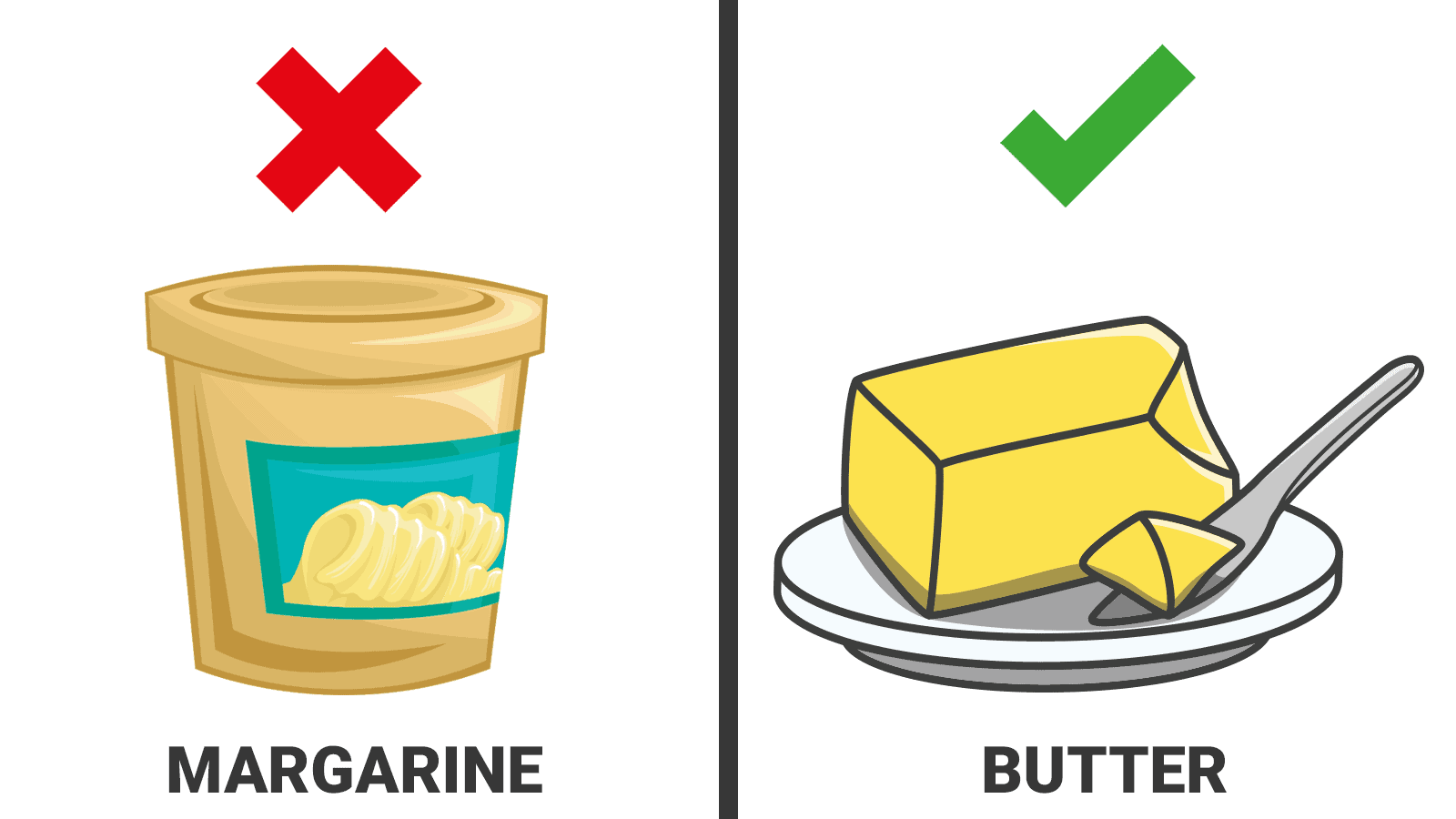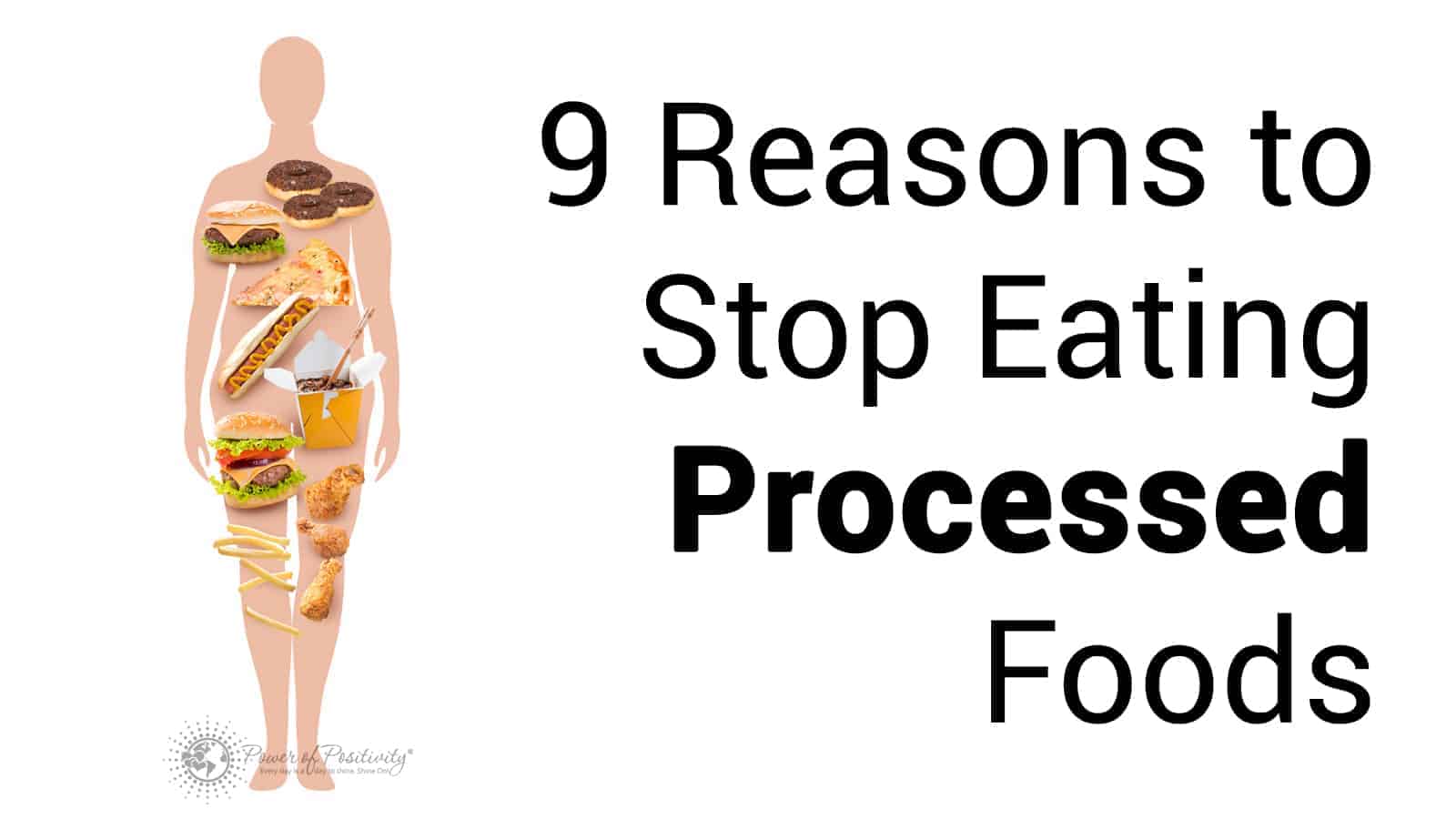Bad news for Margarine fans: it’s not much healthier for you than butter. In fact, most evidence points to the product being far less healthy in the long run.
When margarine products began flooding grocery stores in the late 70’s and early 80’s, owners of Unilever stock (and other companies) got rich – and our health suffered as a result. We were told – by doctors, nutritionists, public health officials – that butter, because of its fat content, was an unhealthy dinner table choice. And margarine-producing companies reaped the massive market rewards.
Most of us don’t keep up with the butter versus margarine debate.
But here are a few differences between the two you may want to know about:
1. The Ingredients
Butter products are made from fermented milk or cream, water, and milk proteins. Dairy salt is added to some varieties of butter, though the product is commonly available as salted or unsalted. Margarine doesn’t contain any dairy at all and is instead made up of emulsifiers, salt, and vegetable oils.
In short, butter is a natural product and margarine is not. Margarine is heavily-processed, and butter is not. Which leads us the next point:
2. The Processing
Butter products undergo separation and churning, a manufacturing process wherein buttercream derived from milk fat is stirred in a giant industrial machine. The product is then pasteurized and aged 24 hours before churning. Afterward, the final product is shaped and placed into packages for shipping.
Margarine undergoes a process called hydrogenation. Hydrogenation is less complicated, chemically converting liquid vegetable oils into solid or semi-solid fats. It’s actually only a few steps away from being plastic…
3. The Fats
All butter sold commercially in the United States must be at least 80 percent fat. Butter is, of course, an animal fat – containing higher amounts of saturated fat than margarine. Unlike the fats contained in most margarine, however, those included in butter are mostly of the omega-3 and omega-6 varieties.
Margarine and spreads found in the dairy aisle range from 10 to 90 percent fat, consisting mainly of the polyunsaturated and monounsaturated varieties. Some margarine products may also contain trans fats, which are notoriously bad for health.
4. The Taste and Texture
Regardless of what ICBINB’s (admittedly funny) commercials may tell you, there IS indeed a difference in the taste and texture of the two products. Put simply, a product manufactured entirely (and naturally) from animal fat will not, in most cases, closely resemble a wholly-processed substitute.
These differences are evident in baked goods, which traditionally use a large amount of butter or margarine. Products made with the latter tend to taste quite different (often, worse) from those made with natural butter.
5. The Nutrition
While neither butter nor margarine is “healthy,” the latter lacks important nutrients such as omega-3 and omega-6 fats which are vital for brain and heart health. Furthermore, margarine contains just trace amounts – if that – of vitamins A, D, and E.
Nutrition label stuff aside, heavily-processed foods – a category that includes margarine – is almost always worse for human health than minimally-processed and organic products (more on organic, natural margarine brands later.) Most of the processing at butter producing sites is mechanized, with the exception of added salt to buttercream.
The Verdict (Kind Of)
Kris Gunnars, BSc, in an evidence-based article written for Healthline titled “Butter vs. Margarine – Why I Trust Cows More Than Chemists,” recites what most nutritionists and scientists now understand the be true:
“Given that nutrition organizations have been warning us about butter and pushing us towards processed industrial margarine, you would think that there was at least a hint of evidence suggesting this to lead to better outcomes. Alas, no. Despite margarines being able to lower total and LDL cholesterol in the short term, they actually lead to the opposite effect when measuring hard outcomes.”
Still, there is a place for margarine (and there probably always will be.) Vegans, environmentalists, animal rights groups and other demographics make sure of this.
Fortunately, there are a number of good and natural margarine products. Becel margarine, for example, substitutes heart-healthy olive oil. Another company, called Earth Balance, produces an organic, 100 percent natural margarine spread.
The best advice (with apologies to Kris Gunnars): Do your research and consume certain foods in moderation.















 Community
Community

